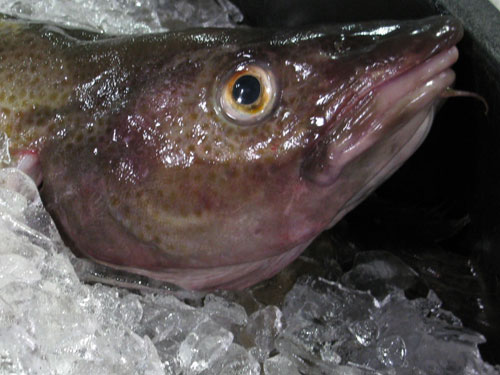
The Atlantic cod is one of the most familiar food fish of the North Atlantic. In North America and Europe, the species’ historical and cultural importance is unequaled.
In the northwest Atlantic cod are found along North America’s Atlantic Coast, in the Gulf of St. Lawrence, and Davis Strait to Greenland. In the Eastern Atlantic, cod are found off Iceland, Scandinavia, and eastern Europe.
Atlantic cod are brown to greenish-gray above, with pale undersides and fine scales. Cod are recognized by their chin barbel, three dorsal fins, two anal fins, and a broom-shaped tail.
Atlantic cod reach lengths of 5 to 6 feet and live up to 25 years. Offshore cod tend to be larger than fish caught from inshore areas. Marketable cod range from 2-3 pound “scrod” to large specimens known as “cows.”
Greenland
In Greenland, cod are harvested by inshore vessels as well as larger open sea trawlers. Greenland’s Atlantic cod fisheries are managed by the Greenland Institute of Natural Resources.
Canada
Canada’s major Atlantic cod fisheries are located off Nova Scotia, the Bay of Fundy, southern Gulf of St Lawrence, and Newfoundland. Canadian Atlantic cod fisheries are managed by Fisheries and Oceans Canada.
USA
In the USA, Atlantic cod are caught from Maine to Cape Hatteras, North Carolina. The majority of catches occur in federal waters of the Gulf of Maine. U.S fishermen harvest cod using bottom trawls, purse seines, and gillnet gear.
The U.S. Atlantic cod fishery is jointly managed in state and federal waters by the Atlantic States Marine Fisheries Commission and NOAA Fisheries in conjunction with the New England Fishery Management Council.
International Waters
Atlantic cod stocks beyond each country’s 200 mile jurisdiction are managed by the Northwest Atlantic Fisheries Organization (NAFO).
Related Information